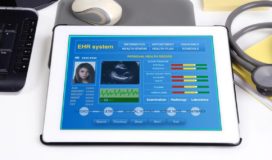Electronic Health Records and Diagnostics
Electronic health records are not only the system for storing the information in a systematized way; it is much more than that. Electronic Health Records (EHR) should be reckoned as the base for the improvement of the health services as better medical treatment can only be provided when there is better or accurate information. EHR system serves the physicians with complete and accurate information that helps them offering suitable treatment and medications for quicker improvement of the patient.
The system has enhanced the ability to diagnose diseases effectively. Apart from effective treatment, it has also reduced the chances for occurrence of medical errors during medical treatment of a patient.
According to a report:-
- 94% of the providers agreed that EHR makes quick access to the required records.
- 88% agreed that EHR is beneficial for the clinic.
- 75% of the providers accepted that EHR is beneficial in providing effective patient care.
Role of EHR in Improving the Ability to Diagnose Diseases and Reduce Medical Errors
- EHR Can Aid in Diagnosis
As discussed earlier, EHR is helpful in getting the important information about the patients that helps in delivering the better results. Not only for the providers but the information stored in EHR is also helpful for the patients to know about their current health status and make further decisions.
- Reduction of Diagnostic Error
EHR is developed not only for storing and transmitting the information; rather it computes the medical information of the patient stored in the cloud. This shows that EHR uses the information for the best possible results for the patients. An EHR system will make the provider aware of the allergies and warns him while prescribing the wrong medication. This makes the job of the providers easy and saves the patients from the diagnostic errors.
- Improve Patient Safety
Safety of patient is the foremost task in the health industry. EHR tries to eliminate every threat to the patient safety by coming with the alerts and the reminders. EHRs are developed to expose any potential safety problem. This further helps the providers to avoid any serious consequence.
- Better Patient Outcomes
Electronic health record system is very helpful in bringing the better patient outcome. The patient outcome means better results of the treatment of the health of the patients. EHR make sure that the healthcare providers look at the condition of the patient more meaningfully. This further helps to overcome all the threats to the patient health and improve patient outcome.
- Improved Quality of Healthcare Services
The effect of the healthcare services increases with the use of EHR system. It becomes comparatively easy to get the blood pressure status of the patient, recording of body mass index and cancer screenings.
- Quick Healthcare Treatment
EHR has not only made the storage and management of the data easy but also made the practitioner to deliver quick medical treatment to the patient. This helps the patient in saving their money and physicians to use this saved time on other patients.
Health IT




